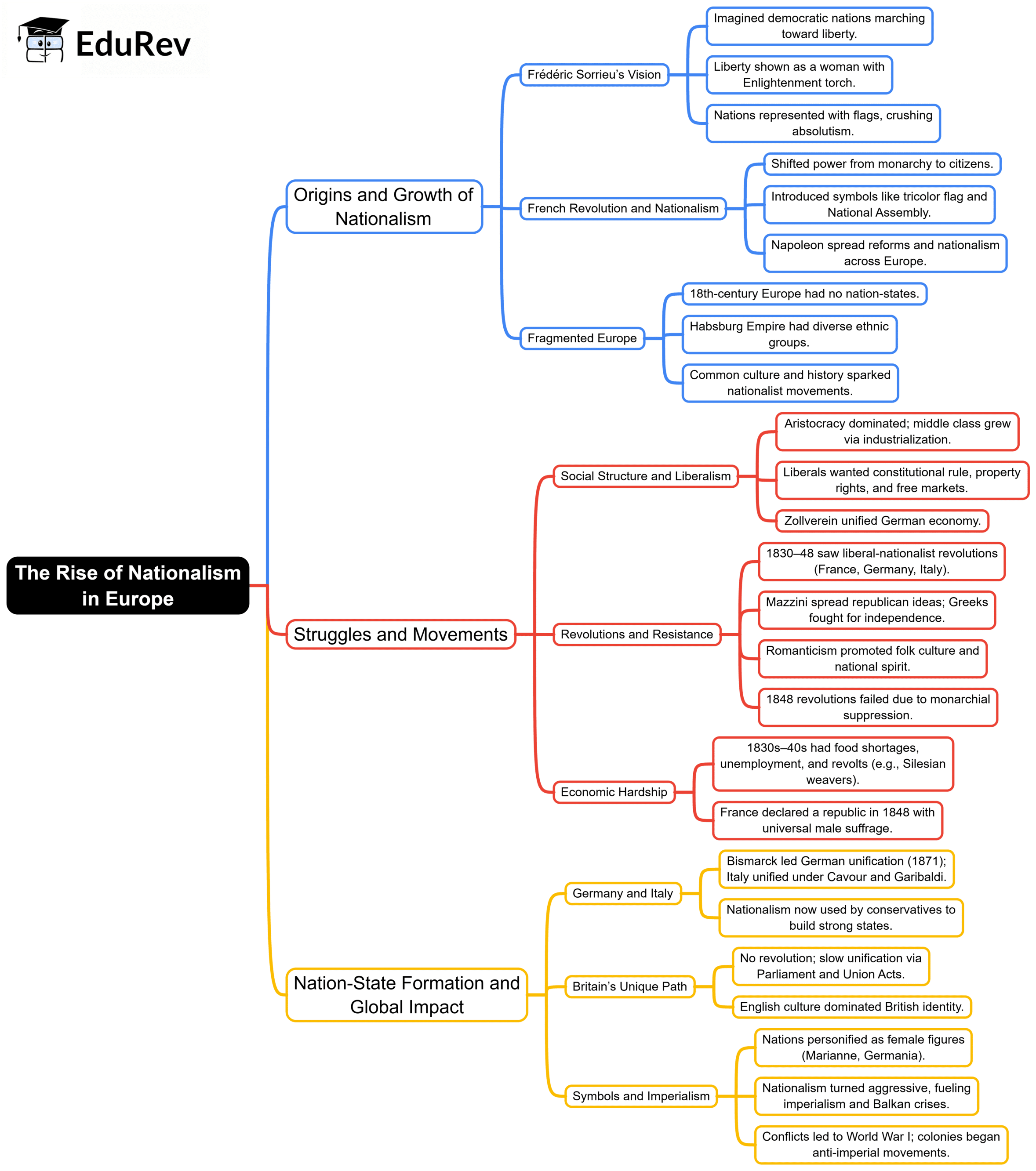Class 10 Exam > Class 10 Notes > Social Studies (SST) Class 10 > Mind Map: The Rise of Nationalism in Europe
Mind Map: The Rise of Nationalism in Europe | Social Studies (SST) Class 10 PDF Download

The document Mind Map: The Rise of Nationalism in Europe | Social Studies (SST) Class 10 is a part of the Class 10 Course Social Studies (SST) Class 10.
All you need of Class 10 at this link: Class 10
|
66 videos|614 docs|79 tests
|
FAQs on Mind Map: The Rise of Nationalism in Europe - Social Studies (SST) Class 10
| 1. What were the main causes of the rise of nationalism in Europe during the 19th century? |  |
Ans. The rise of nationalism in Europe during the 19th century was primarily driven by several factors, including the influence of the French Revolution, the desire for self-determination among various ethnic groups, the impact of the Industrial Revolution which fostered a sense of shared identity, and the decline of empires which created opportunities for national unification.
| 2. How did nationalism influence the unification of Germany and Italy? |  |
Ans. Nationalism played a crucial role in the unification of Germany and Italy by fostering a sense of shared identity among the people. In Germany, leaders like Otto von Bismarck used nationalist sentiments to unify the German states through wars and diplomacy. In Italy, figures such as Giuseppe Garibaldi and Count Camillo di Cavour rallied support for unification by appealing to the common cultural and historical ties among the Italian states.
| 3. What role did nationalism play in the decline of empires in Europe? |  |
Ans. Nationalism contributed to the decline of empires in Europe by encouraging various ethnic groups within multi-ethnic empires, such as the Austro-Hungarian and Ottoman Empires, to seek independence. The desire for self-governance led to nationalist movements that weakened imperial control, ultimately resulting in the fragmentation of these empires.
| 4. How did nationalism affect the political landscape of Europe in the 20th century? |  |
Ans. Nationalism significantly shaped the political landscape of Europe in the 20th century by leading to the rise of nation-states and influencing major events such as World War I and World War II. Nationalist ideologies often fueled conflicts, as countries sought to assert their dominance or reclaim territories, leading to widespread instability and changes in political boundaries.
| 5. What are some modern examples of nationalism in Europe today? |  |
Ans. Modern examples of nationalism in Europe include the resurgence of nationalist parties in various countries, such as the Brexit movement in the United Kingdom, which emphasized national sovereignty and identity. Additionally, there are ongoing nationalist sentiments in regions like Catalonia in Spain and Scotland in the UK, where groups advocate for greater autonomy or independence based on cultural and historical claims.
Related Searches

















